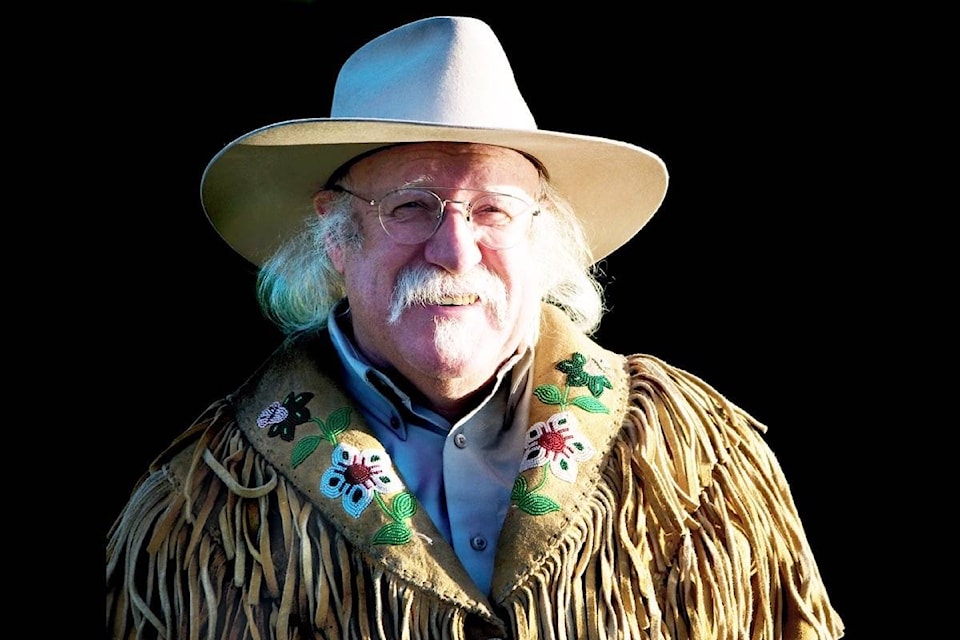Last week I wrote what I thought was a serious column about the plight of salmon in this province.
In it I stated that, at the end of last season, I decided I would no longer fish for sockeye salmon in particular because of their low numbers. I ended the column by mentioning I might fish for carp instead. Since then Ive had a lot of people asked me about carp fishing. No one, however, asked me about my decision to not fish for sockeye. Hmmm.
Carp are members of the Cyprinidae family. The common carp, which inhabit the Interior waters of B.C., can be easily distinguished from other cypinids by the presence of two rather long, fleshy barbels on each side of its upper jaw and the serrated spines in the anterior portion of its dorsal and anal fins. They are not a pretty fish by any stretch. Carp are omnivorous feeders, with a preference for chironomid pupae and damsel fly nymphs, as well as other aquatic invertebrates, plankton and macro algae.
Carp can live to be well over 20 years old and grow to reach lengths of up to 1,220 mm (50 inches).
Carp are omnivorous feeders, with a preference for chironomid pupae and damsel fly nymphs, as well as other aquatic invertebrates, plankton and macro algae. Contrary to commonly held beliefs, carp are not bottom feeders. They often feed near the bottom of a lake, but do not actually feed right on the bottom the way suckers do. When searching for food, they tend to disturb the sediment on the lake bottom, stirring up and dislodging insects that inhabit the flora. They will then feed on the insects floating in the water.
There are a tremendous variety of angling methods that can be used to catch carp. I use a spinning reel spooled with 300 yards of 12 pound test fluorocarbon on a long, thin, flexible rod around 10 feet in length with a soft flexible tip that allows me to feel each nibble and even the softest take.
Read more: Column: Mourning doves upset morning routines
Read more: Salmon Arm chosen for Rogers Hometown Hockey tour in 2020
Read more: Column: Collisions, horses and displays of public compassion
When fishing with light line, it only makes sense that you will also be using smaller terminal tackle – the smaller the hook the better. Carp tend to peck at their food several times before swallowing. When a carp shows interest, you will feel a number of small rapid taps on your rod tip or notice a gentle bobbing of the float. Always wait until the fish has committed fully before setting your hook, and try not to set the hook too hard or you may end up ripping the hook out of the fish’s mouth. Keep in mind that only a small amount of bait it required on the hook. Too much bait and you end up feeding the fish rather than catching them. You need to make sure your bait is suspended just above the lake bottom. Carp can be taken on dough ball, worms and bait such as shrimp.
The trick to catching coarse fish is getting your bait into their feeding zone or passing your lure through the zone. Its not really all that complicated.
Once hooked, carp will often dart for the nearest cover, such as rock piles, logs or weed beds. This is where longer rods come in handy, as you have more control of where you choose to fight the fish. The important thing to keep in mind is that you are fighting big, powerful fish with softer than average mouths, while using relatively small hooks. The best way to fight them is to loosen your drag (2.5 to 3 lbs of resistance, possibly more if you are fishing in current). Avoid trying to “winch” carp in by constantly reeling against it. Make the fish fight the rod. Be sure to maintain constant pressure on the fish – lots of arch, lots of pressure.
Like I said, carp may not be the prettiest fish, but they certainly are a scrappy enough to fight on light line.
I still cant help but wonder though why no one asked me about not fishing for sockeye. Maybe it’s because people are finally starting to understand just how serious the problem is, and enough anglers are also deciding to not fish for them. Maybe things are changing.
@SalmonArm
newsroom@saobserver.net
Like us on Facebook and follow us on Twitter
